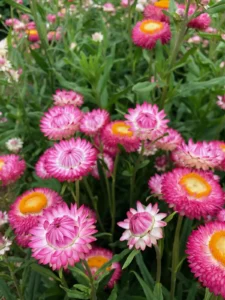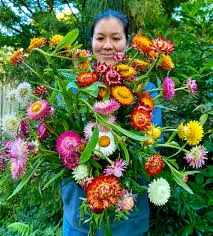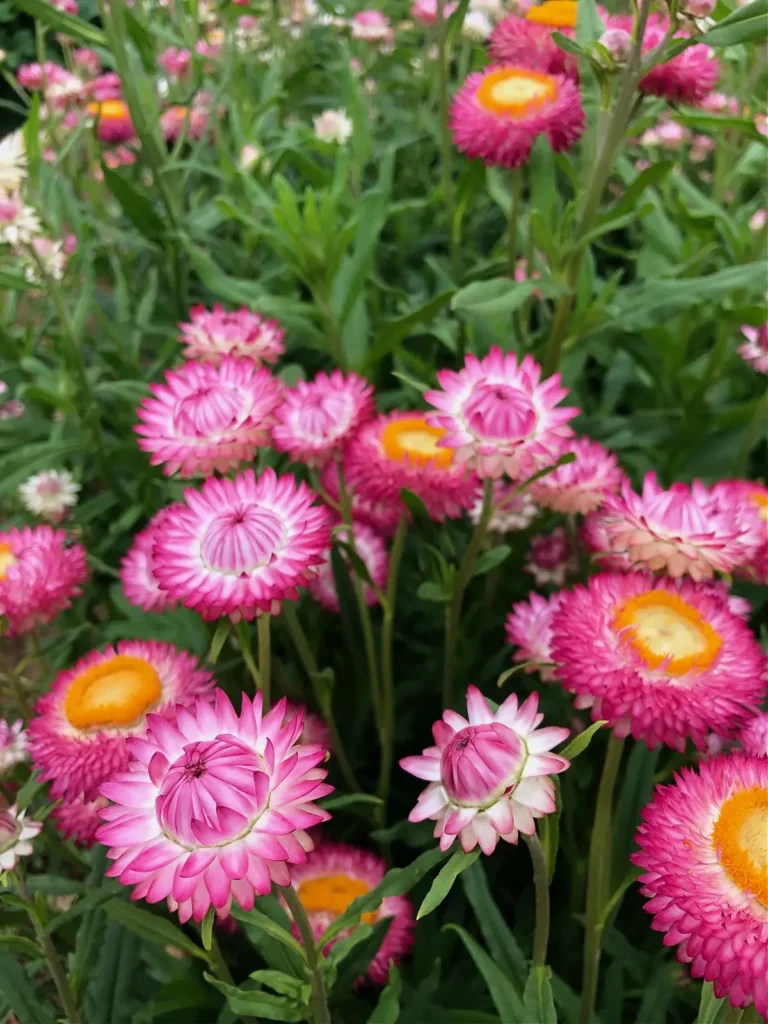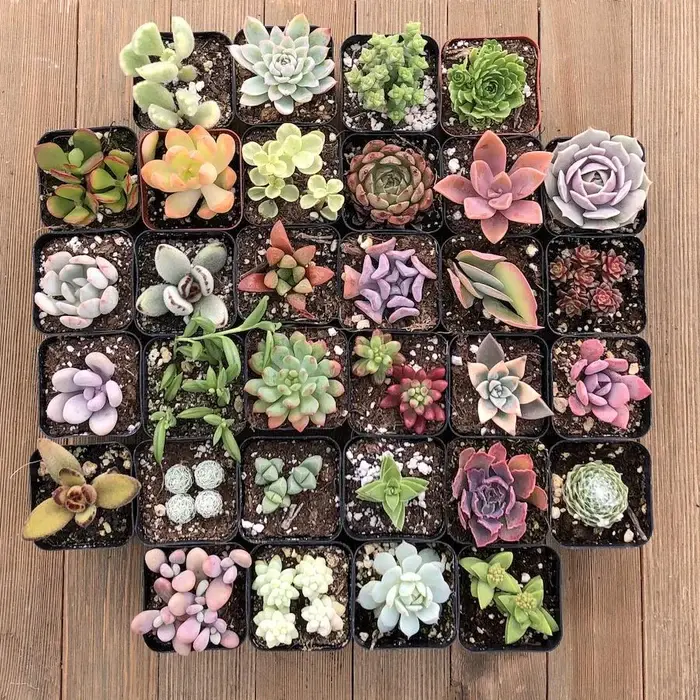Strawflowers: 10 Essential Tips for Growing Them
Strawflowers, also known as everlasting daisies or paper daisies, are unique and captivating additions to any garden. Native to Australia, these vibrant flowers are prized for their papery texture and remarkable longevity, both in the garden and as dried flowers.1 Their scientific name, Xerochrysum bracteatum, reflects their ability to thrive in dry conditions (“xero” meaning dry, and “chrysum” meaning golden). These heat-loving, drought-tolerant plants reward gardeners with non-stop blooms from summer until the first hard frost.
A Burst of Color and Texture
Strawflowers offer a stunning array of colors, including bright shades of red, orange, pink, purple, yellow, and white. The “petals” are actually bracts, modified leaves that have a papery feel, giving the flower its distinctive texture and name. Gardening Know How describes them as having a “charming, straw-like bloom.” They typically grow to a height of 1-3 feet and 1-2 feet wide, making them suitable for various garden settings.
Growing Strawflowers: A Comprehensive Guide
Strawflowers are relatively easy to grow, making them a great choice for both novice and experienced gardeners. Here’s what you need to know:
- Sunlight: Strawflowers thrive in full sun, requiring at least 6-8 hours of direct sunlight per day. While they can tolerate partial shade, this may reduce the number of blooms.
- Soil: They prefer well-drained soil, and can tolerate sandy or rocky conditions. The Spruce recommends a mildly acidic to neutral pH (5.5 to 6.5).
- Watering: Once established, strawflowers are drought-tolerant. Water deeply when the top inch of soil feels dry, but avoid overwatering, as this can lead to root rot.
- Temperature and Humidity: Strawflowers prefer warm weather and are not frost-tolerant. They do best in temperatures between 65-70°F during the day and around 60°F at night. Low humidity is ideal.
- Propagation: Strawflowers are typically propagated from seed. You can sow seeds directly in the garden after the last frost, or start them indoors 6-8 weeks before the last frost. Eden Brothers provides detailed planting instructions.
- Fertilizing: Light feeding with a balanced fertilizer monthly can encourage more blooms.
- Pests and Diseases: Strawflowers are generally pest and disease-free. However, they can be susceptible to aphids, slugs, and snails. Good air circulation and proper watering can help prevent fungal diseases like downy mildew.
Strawflower Varieties: A Rainbow of Options
There are numerous strawflower varieties available, offering a wide range of colors and sizes. Some popular choices include:
- King Size Series: Known for large blooms and strong stems, ideal for cutting.
- Monster Series: Features extra-large double blooms in various colors.
- Tom Thumb Mix: A dwarf variety, perfect for containers and smaller gardens.
- Silvery Rose: Offers blooms with a delicate rose-pink color at the tips.
Seedaholic offers a wide selection of strawflower seeds.
Uses for Strawflowers: Beyond the Garden
Strawflowers are incredibly versatile, offering a multitude of uses:
- Cut Flowers: Their stiff stems and vibrant colors make them excellent for fresh floral arrangements.
- Dried Flowers: Strawflowers retain their color and shape when dried, making them ideal for long-lasting arrangements, wreaths, and other crafts. Molly Oliver Flowers provides tips for drying strawflowers.
- Attracting Pollinators: Strawflowers attract bees and butterflies, making them a valuable addition to any eco-friendly garden.
Benefits of Strawflowers
Beyond their aesthetic appeal, strawflowers offer several benefits:
- Low Maintenance: They are drought-tolerant and require minimal care once established.
- Long Blooming Season: Strawflowers provide continuous color from summer until frost.
- Versatile: They can be used in various garden settings, as cut flowers, and in dried arrangements.
- Medicinal Properties: Some studies suggest that strawflowers have anti-inflammatory and antimicrobial properties. StuartXchange provides information on the medicinal uses of strawflowers.
Strawflowers are a fantastic choice for gardeners seeking vibrant, low-maintenance blooms. Their unique texture, wide range of colors, and versatility make them a valuable addition to any garden or floral arrangement.


Check our latest posts !


